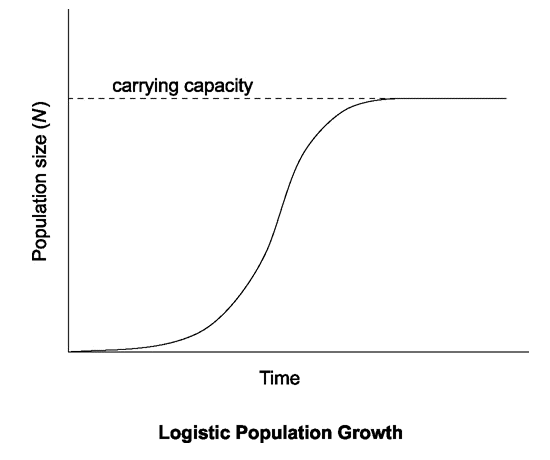What is ecology?
Ecology describes the distribution and number of organisms, how the organisms interact with other organisms, and how the organisms interact with the environment.
A population of organisms is a group of organisms of one species that is living in one specific location/area.
A community has many different populations that live in the same area.
The biosphere is the part of the Earth that contains living things, like the soil, ocean, and atmosphere (which contains birds).
Organisms live in habitats, which include the organisms' shelter and food. Organisms live in habitats that are best suited for them.
An organism's niche is all of the abiotic (nonliving) and biotic (living) factors that are part of the organism's habitat. For example, birds with long beaks will occupy a different niche from birds with short beaks. Long-beaked birds will consume large seeds while short-beaked birds will consume small seeds.
Population Ecology
Population ecology explains how populations are distributed and whether their size is increasing or decreasing (population growth).
A couple terms must be defined:
- Size of the population (N) is the total number of individuals in the population
- Density of a population is how many individuals exist per unit of area (such as buffalo/m2 or fish/m3)
- Dispersion is the distribution of organisms in the environment. Three main types are clumped, random, and uniform (as indicated in the image).
Age structure is the distribution of the number of individuals in each age group. A population is rapidly growing when the bars for the young ages are very large. Populations with large bars for the older ages indicate that the population is declining. If the bars for each age group are approximately the same, there is zero population growth (ZPG).
/united-states-population-pyramid-2014-58b879c43df78c353cbc66fc.jpg)
Survivorship curves show the mortality rates of individuals in a species at different ages. Type I curves indicate species that have low mortality rates at young ages, but high mortality rates at old ages. Humans are a good example of these types of curves. Type II curves denote species that are equally likely to die at any age. Birds are a good example of this. Type III curves show species in which most individuals die young while old individuals are more likely to survive. A good example of this type of curve is plants.
Variables and Equations for Population Growth
There are many equations that can be used to determine the population size given certain conditions.
But first, here are a few terms:
- Biotic potential of a population is the maximum growth rate of the population (which can only be achieved with unlimited resources and unlimited habitat size). It is extremely unlikely that a population will actually grow at its maximum growth rate.
- Age at reproductive maturity is the age at which organisms in the population are sexually mature and can reproduce. This is often correlated with the organisms' life duration.
- Clutch size is the number of offspring produced by a single pair of parents at one time. All of these offspring may not survive to reproductive maturity.
- Frequency of reproduction is how quickly the organisms reproduce. Is there a lot of time between reproductive events?
- Carrying capacity is the maximum number of organisms a habitat can support.
- Limiting factors are factors that stop a population from reaching its biotic potential. Density dependent factors such as disease and competition for resources change as the number of individuals in the population changes. Density independent factors such as natural disasters and temperature changes can also affect the population.
Now time for the equations!
The growth of a population is modeled by

r is the growth rate of the population and N is the starting population size.

This means that the change in number of individuals in the population per unit of time (the left side of the equation) is equal to the maximum reproductive rate/biotic potential (rmax) multiplied by the starting population size (N). rmax is also called the intrinsic rate of growth. If it is negative, there are more deaths than births and if it is positive, there are more births than deaths.
Exponential growth in a population occurs if the reproductive rate rmax is greater than 0. Exponential curves are also called J-shaped curves.
Logistic growth occurs when there are limiting factors that restrict the population from exceeding the habitat's carrying capacity. The formula is

K represents the carrying capacity. Logistic curves are also called S-shaped (or sigmoid) curves because of their unique shape.
r-selected species show exponential growth and are called opportunistic species. Their population sizes usually crash after some time. K-selected species, on the other hand, show logistic growth. Humans are a good example of a K-selected species.
